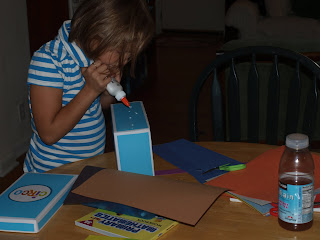First, let me say: I love this book. So much. It's huge. 761 pages. But in spite of it's weight, it's fairly concise in each subject. It's a great jumping off point for further discovery. It's objective and free of religious bias. And, importantly for young people, it has really lovely pictures.
In all of it's 761 pages (did I mention that it's huge?), Ava chose 3 topics that she would like to study. Catherine the Great of Russia. Astronauts and space travel. And Ancient Egypt and Clepatra.
I love it that she was drawn to famous women in history. My heart swellled a little. If I were more emotional, I may have shed a small tear of joy. (I did not.)
So, in addition to our book box selection previously discussed, we picked up a fairly short biography of Catherine the Great at the library. While I was in that stack, I also grabbed a copy of a biography of Anastasia Romanov.
She finished the book about Anastasia quickly and is working through the (longer, more in-depth) biography of Catherine a little more slowly. But the point of this post: picture study.
Children love to create art. Schools love to promote art programs. Both are good, great things. But children do not look at and study enough great art. My children love to visit the Art Institute. They love to look at portraits. And I try to find pretty pictures for them to look at when I can find some relevance to what we are studying. Since I don't like to slice up our studies into different subjects, we don't always do picture study, or art at all. But biographies and major events are good opportunities for incorporation.
So, here she is, our current picture study:
Isn't she lovely? It's so rare to see such an empowered portrait of a woman.

